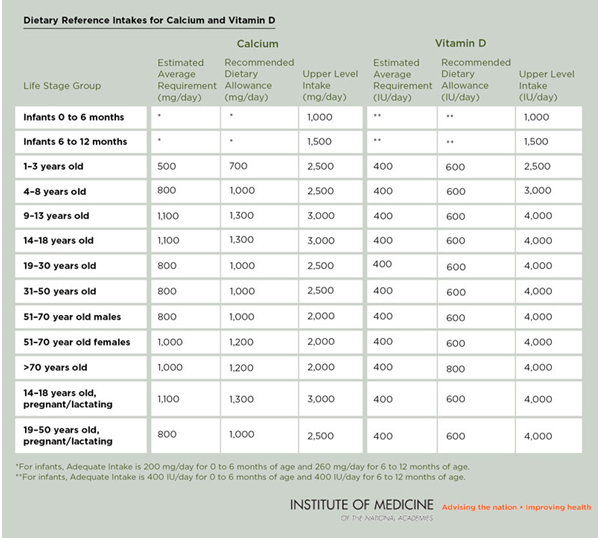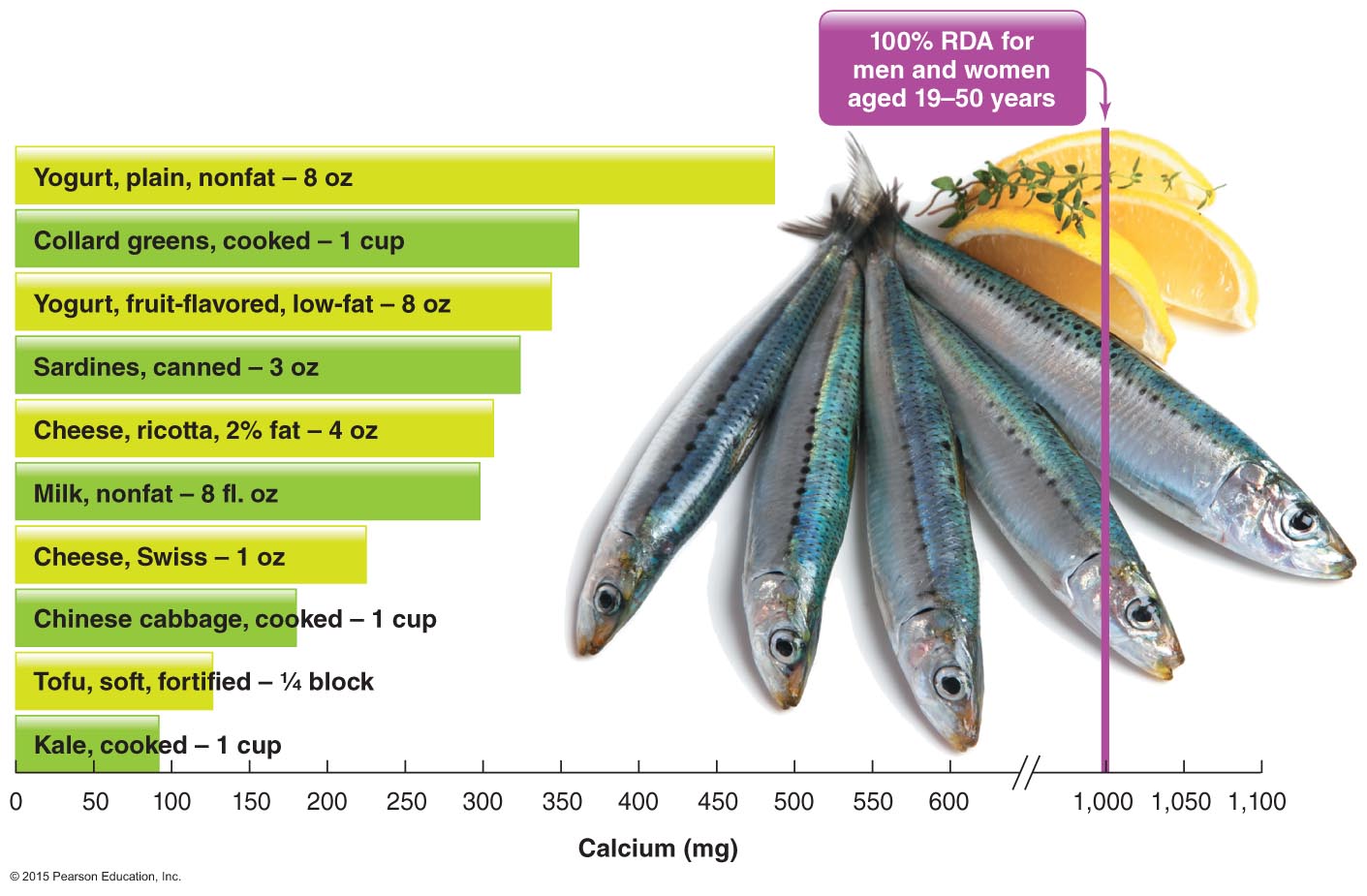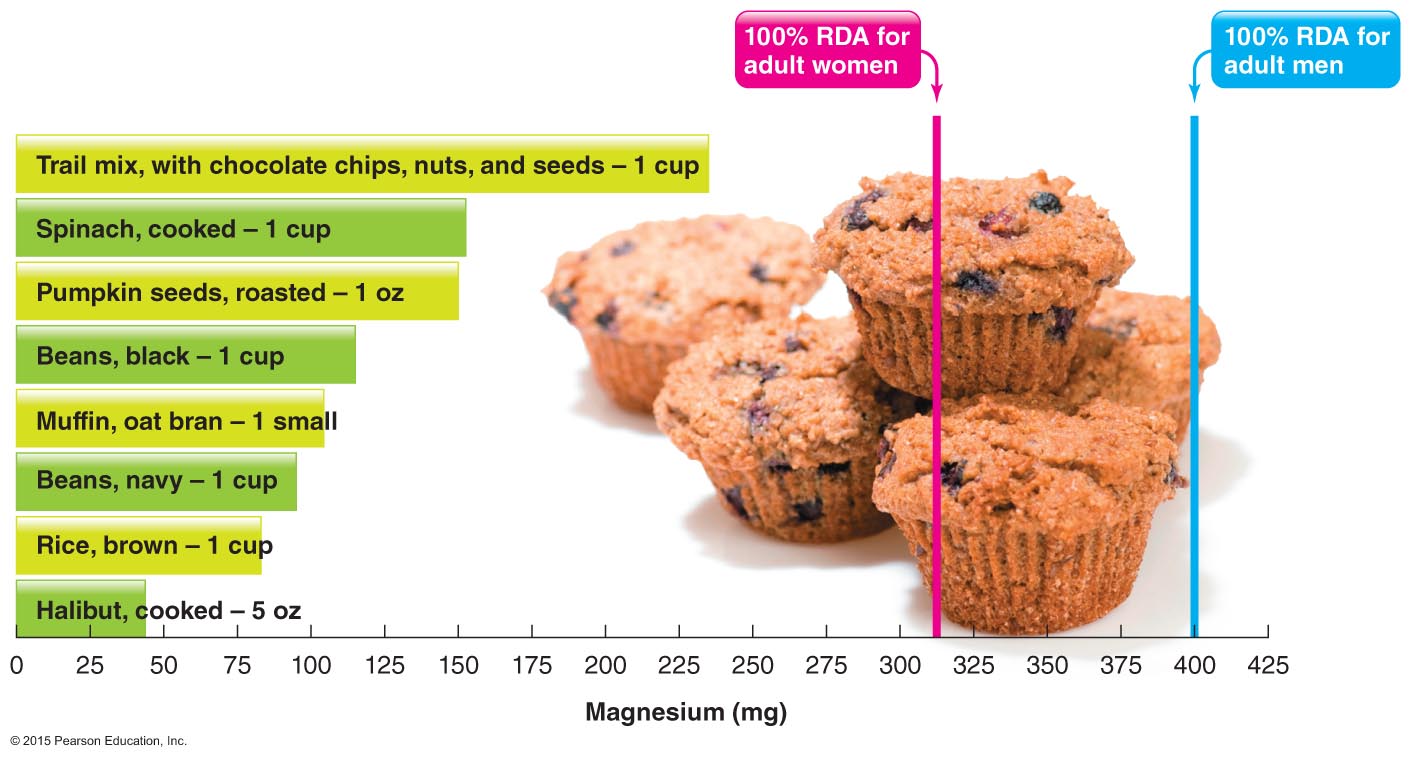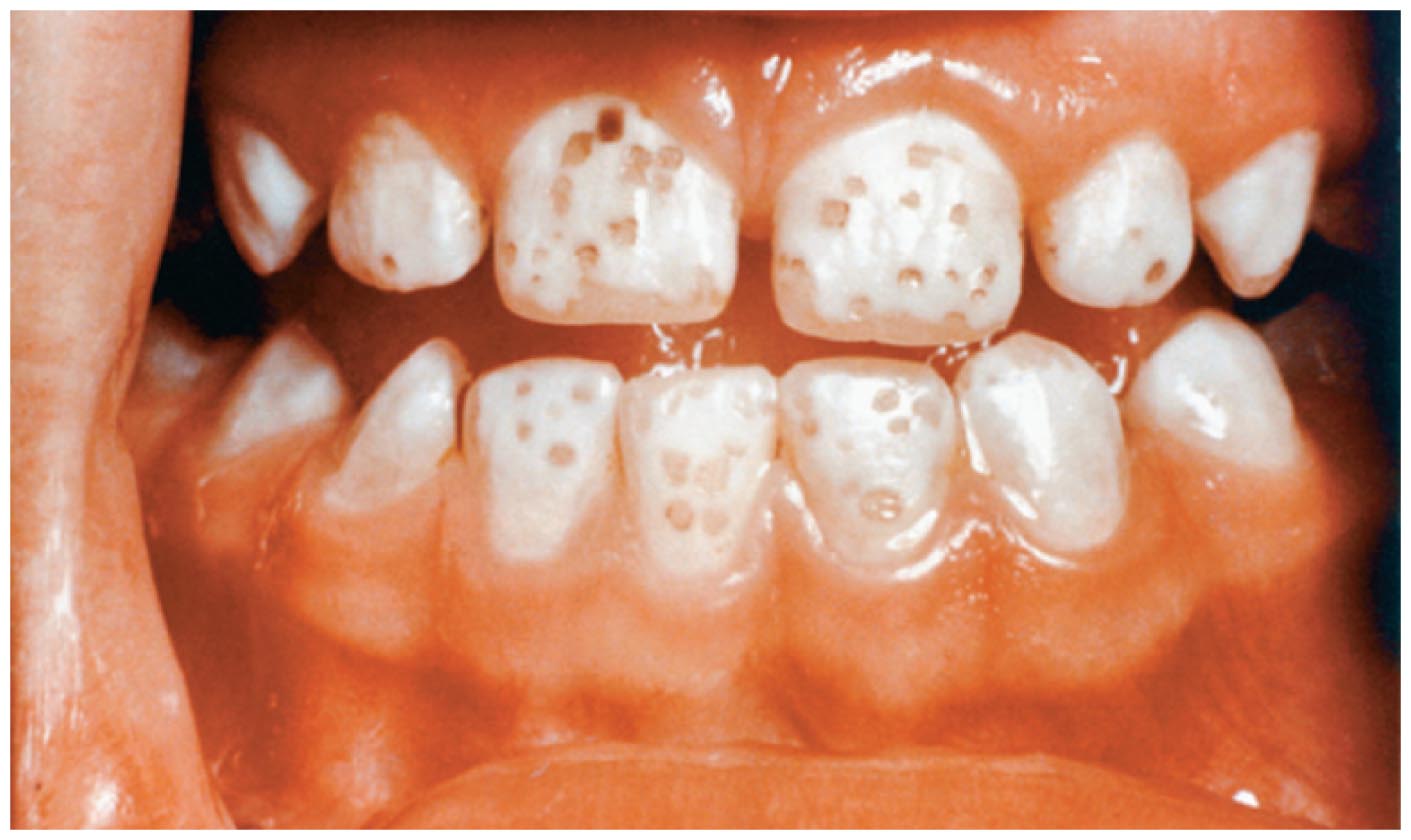NUTRI-CHART
4
lists the Nutrients Involved in BONE
HEALTH.
As you can see at the top of this page, bone health depends on many
factors, including
- genes
- sun exposure
- exercise
- not smoking and
- hormonal levels (estrogen/testosterone)
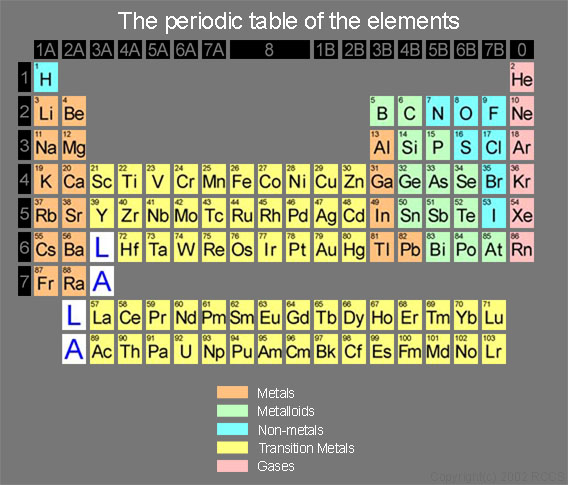
The
macronutrient protein is also important for
strong bones because crystals
form around a matrix
made of protein (collagen). High protein diets (specifically animal
protein) can
promote calcium excretion as can the mineral sodium. Both
protein and sodium are often high in American diets, which is not a
good situation for bones, especially considering the diet might also
be low in calcium.
Common American diets might also be low in 2
vitamins important for bones-
vitamin D and vitamin K. (Remember that vitamin K is not the same thing as the mineral potassium, abbreviated with a K.)
Vitamin D helps your body absorb calcium and phosphorus and vitamin
K helps make osteoclacin, a
protein associated with bone matrix remodeling.
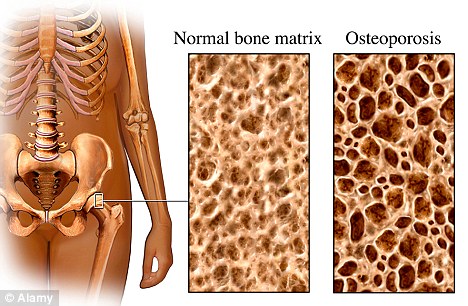
JUST RIGHT amounts of Vitamin D in the body affects how cells grow, proliferate & specialize. Vitamin D helps keep cells from becoming malignant or have autoimmune responses and when cells do go bad, Vitamin D perhaps causes them to self-destruct. The following article is a great overview of Vitamin D and its functions, and how to ensure you get enough.
| TOO LITTLE vitamin D in the body may
increase risk of a variety of diseases, but the primary result will be a loss of
bone mass. In children too little vitamin D can lead to rickets, which
is inadequate mineralization of bones.
The Linus Pauling Institute (Oregon State University's Micronutrient Research for Health) recommends that generally healthy adults take 2,000 IU (50 mcg) of supplemental vitamin D daily. Most multivitamins contain 400 IU of vitamin D, and single ingredient vitamin D supplements are available for additional supplementation. Food Sources of Vitamin D
Looking at the above food sources do you think you get enough Vitamin D from foods? If not, what kind of dietary changes could you make to increase your food intake of Vitamin D? Calcium- Ca There was a document posted in moodle that lists food sources of vitamins and minerals, including those that help with bones, such as calcium. Canned salmon is listed as a source of calcium, while fresh salmon is not listed. This is because the high heat used in the commercial canning process pulverizes the bones so they can be eaten. Dairy and greens are some of the best sources of calcium (see image below). Milk, cheese, and yogurt are all excellent sources of calcium. Greens like kale and collard greens are also good sources and the calcium is well absorbed. Other greens like spinach, have high levels of oxalates which bind calcium and lower its ability to be absorbed.
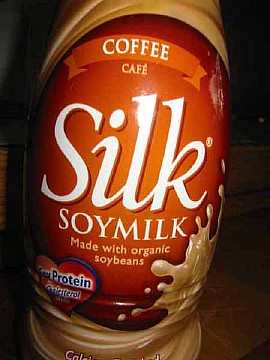 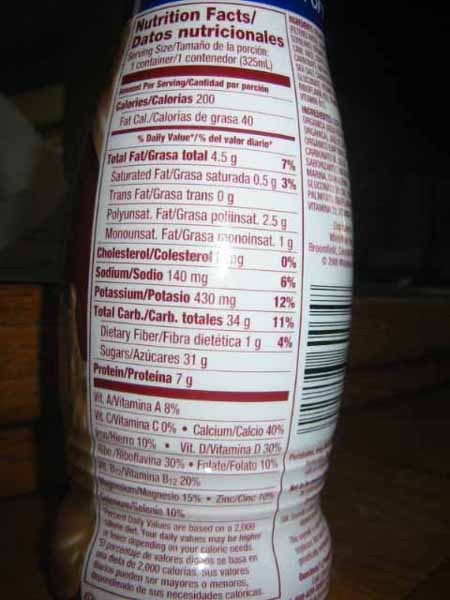 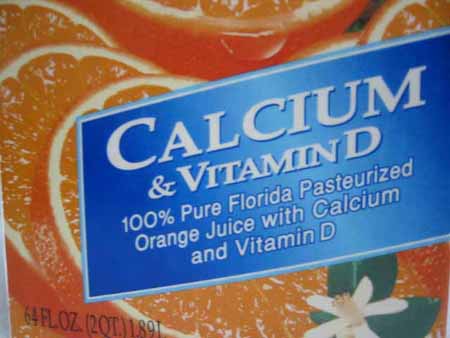 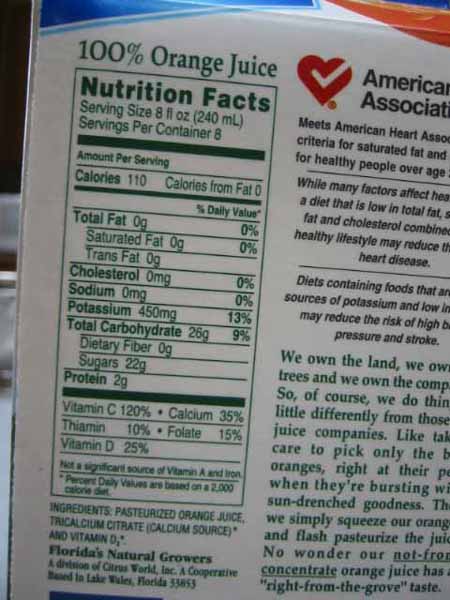 TOO MUCH calcium from foods does not lead to
significant toxicity symptoms. However, an excess intake of
calcium from symptoms can interfere with absorption of other minerals,
including iron, zinc and magnesium.
|
NUTRI-CHART 5 lists the Nutrients Involved in ENERGY METABOLISM
Often times the B-vitamins are marketed as giving us energy (you
can find them in many energy drinks). But remember, since we don't
have the enzymes to break down these vitamins we don't get energy from
them directly, but indirectly they are involved in energy metabolism
(generating energy from carbohydrates, fats and proteins).
There are 8 B-vitamins involved in energy metabolism. These are thiamin, riboflavin, vitamin B6, niacin, folate, vitamin B12, pantothenic acid and biotin.
These B-vitamins function as part of coenzymes for cellular respiration. This means that they activate the enzymes that bring about the reactions that release the energy from the macronutrients.
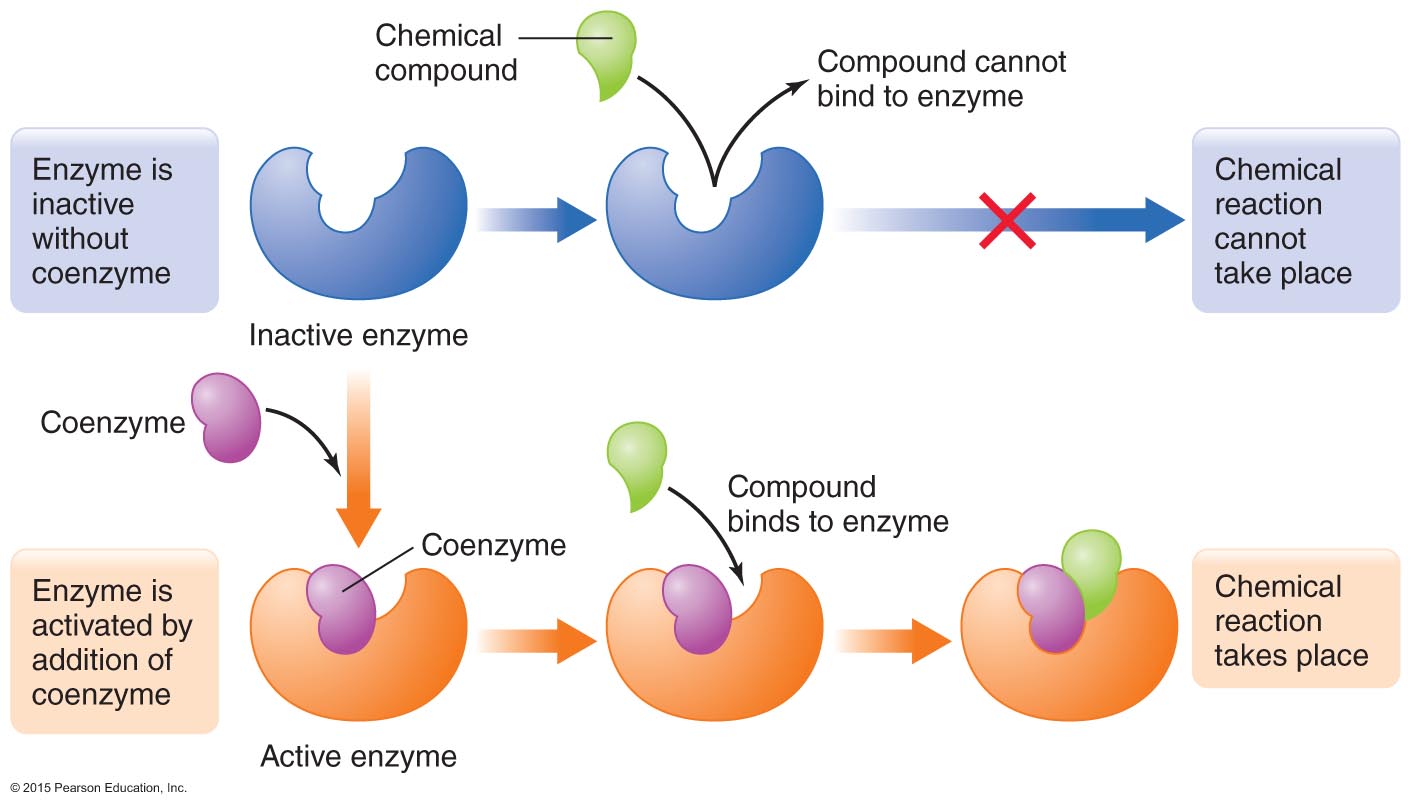
The below chart illustrates many of the coenzymes essential for various metabolic functions, and this is just a small sample of the thousands of roles that B-vitamins serve the body.
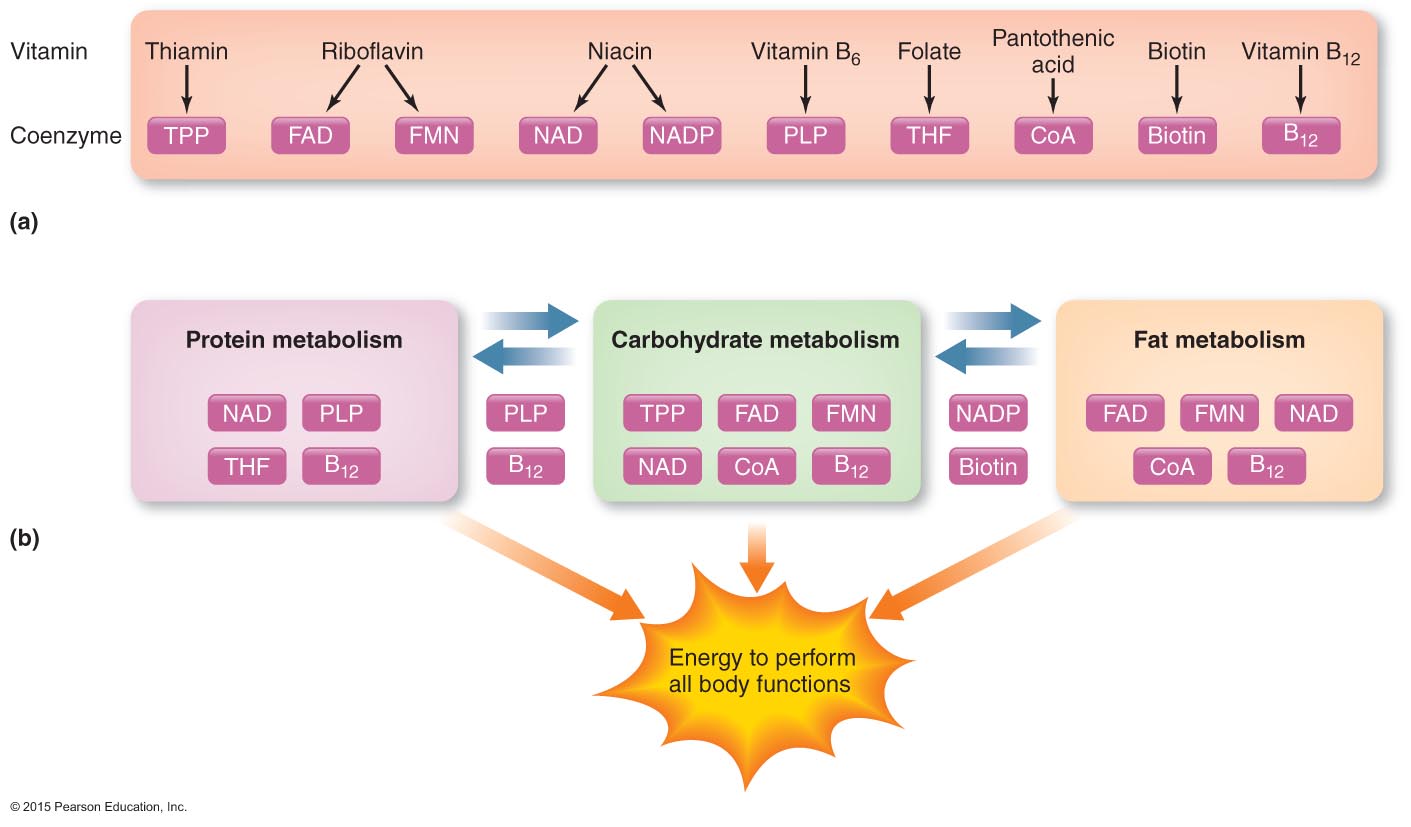
Return to the below document that was posted in an
earlier week in moodle, where by now
you should have filled in most of the blank lines.
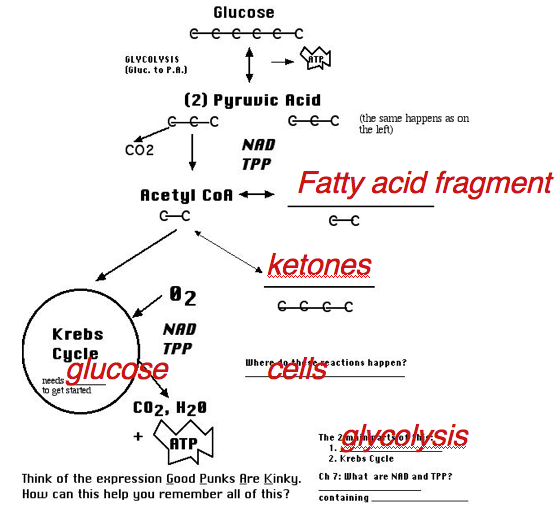
On the bottom of this illustration it asks, "What are NAD and TPP?"
Without any of those B-vitamins, cellular respiration couldn't happen in the body. Fatigue, and eventually death, would be the result. It would be like having no way to strike a match for (or otherwise start) a fire. You could have a large woodpile, but you couldn't get heat from that wood.
PLEASE
USE YOUR TEXT TO FILL IN FOOD SOURCES, TOO MUCH, TOO LITTLE, AND JUST
RIGHT COLUMNS IN YOUR NUTRI-CHARTS FOR THE B VITAMINS.
In addition to those B-vitamins, there are other vitamins and minerals involved
with energy metabolism as well. Vitamin C and iodine are both
necessary for the synthesis of thyroid hormones. Vitamin C helps produce thyroxin, a
hormone that helps regulate the basal metabolic rate. Someone
with a low BMR would be sort of like a really wimpy fire that burned
slowly.
Iodine (I), chromium (Ch), manganese (Mn), Choline, and
sulfur (S) are
minerals that are important for the reactions of cellular respiration
to happen. Please look at Nutri-Charts and text for more information on
these nutrients. They will not be discussed in the lecture here.
NUTRI-CHART 5 lists the Nutrients Involved in BLOOD HEALTH
Above we discussed some of the nutrients involved in energy
metabolism. Without the blood to transport nutrients and oxygen,
energy metabolism would never happen, and we would not survive.
Healthy blood is vital to maintaining life as it transports virtually
everything in our body, including wastes to be excreted.
Some of the MINERALS involved in blood health include iron (Fe.... that stands for ferrous), zinc (Zn) and copper (Cu.... that stands for cupric).
Iron (Fe)
There are 2 major dietary forms of iron: heme iron and non-heme iron. Heme iron is only found in foods of animal origin, within hemoglobin and myoglobin. The structure of heme iron is shown below.
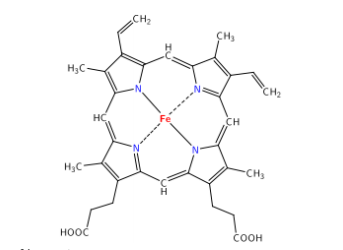
Approximately 40% of iron in meat, fish, and poultry is heme-iron, and
the other 60% is non-heme iron. Non-heme iron is the mineral
alone. See food sources below.
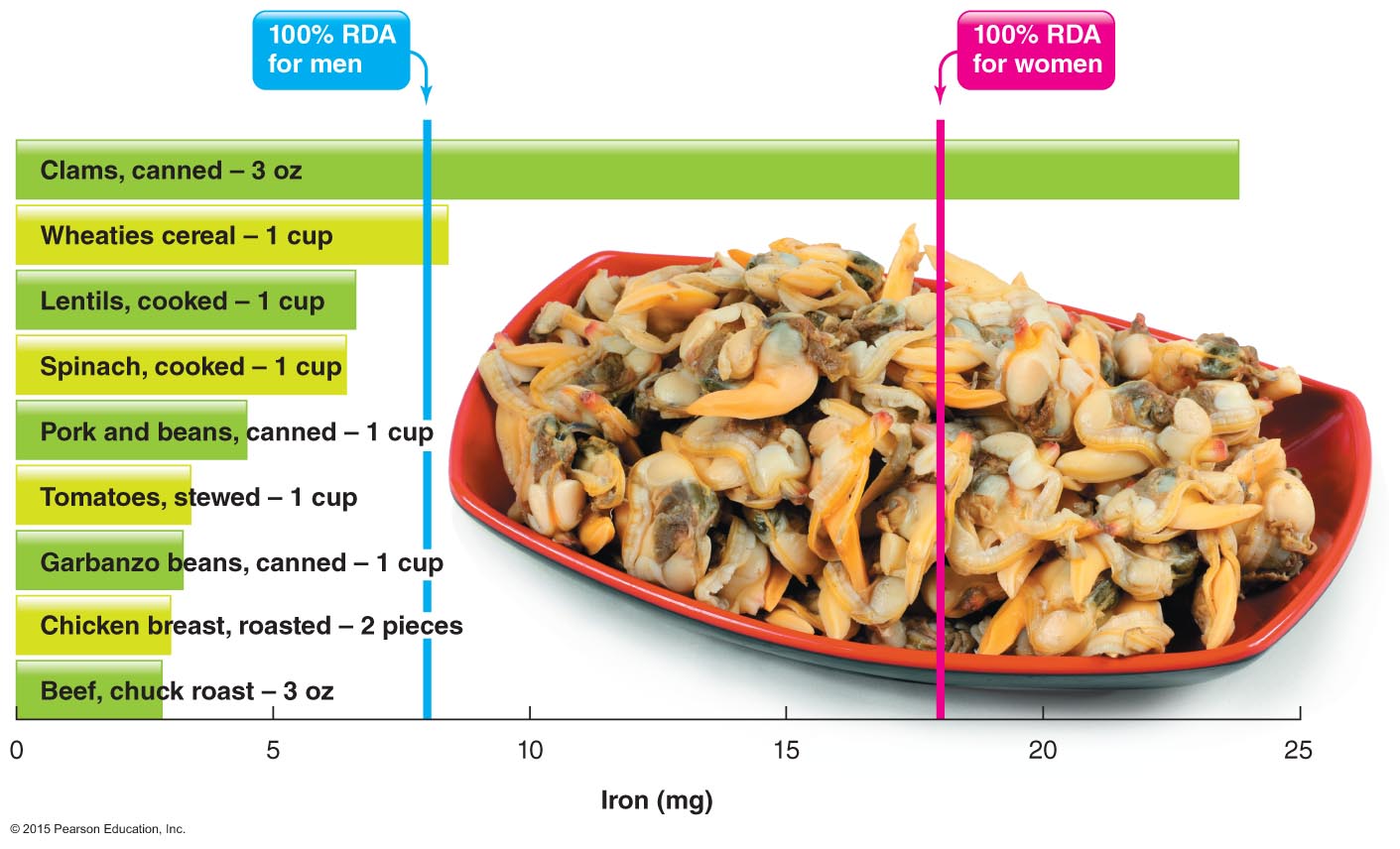
It is estimated that 25% of heme iron and 17% of non-heme iron are
absorbed (however, Vitamin C and a special meat factor in meat,
fish and poultry enhance the absorption on non-heme iron). Approximately 85-90% of the iron we consume is non-heme iron.
In addition to getting iron from food sources, if food is cooked in cast
iron cookware, a small amount of iron can be transferred to the food.
The story below is an iron fish that is being used in Cambodia to
increase iron intake in an area with prevalent iron deficiency.
Canadian’s lucky iron fish saves lives in Cambodia
Many breakfast cereals are also fortified with iron, as the following video
shows.
Here is a link to the above video:
https://youtu.be/pRK15XSqtAw
Iron is a component of numerous proteins in the body,
including hemoglobin, myoglobin and enzymes.
Hemoglobin contains heme that is responsible
for red blood cells’ red color. Hemoglobin carries oxygen to tissues.
The function of hemoglobin can be seen in following link,
hemoglobin. Myoglobin is similar to hemoglobin in that it can bind
oxygen. However, instead of being found in blood, it is found in muscle.
There are also a number of enzymes that use iron as a cofactor.
Iron deficiency is the most common deficiency worldwide,
estimated to affect 1.6 billion people. In the US, it is less common,
but an estimated 10% of toddlers and women of childbearing age are
deficient. Iron deficiency often results in a microcytic (small cell),
hypochromic (low color) anemia, that is a result of decreased hemoglobin
production. With
decreased hemoglobin, the red blood cells cannot carry as much oxygen
and without decreased oxygen energy metabolism slows. A person with this
anemia feels fatigued, weak, apathetic, and can experience headaches
delayed cognitive development in children. Those who are particularly at
risk are:
Women of childbearing age- because of losses due to menstruation
Pregnant women- because of increased blood volume
Vegetarians- because they do not consume heme iron sources
Infants- because they have low iron stores that can quickly be depleted
To give you a better understanding of these risks, it is helpful to look
at how much higher the RDAs are for women of reproductive age and
pregnant women compared to men.
Women of reproductive age 18 mg/day
Pregnancy 27 mg/day
Men 8 mg/day
As most things go with nutrition, more is not
necessarily better. One of the most common causes of childhood poisoning is from the
ingestion of way-too-many multivitamin/mineral supplements at one time.
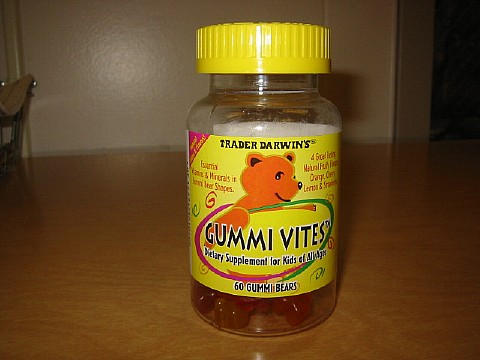
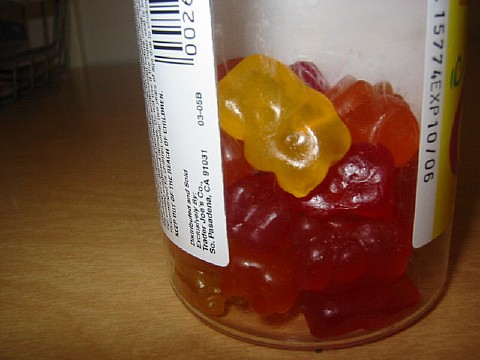
A child who swallows too many of them may need to have their stomach pumped because they can damage their heart.
Too much iron from supplements can also decrease the body's ability to absorb copper.

Copper. I won't say anything else besides what's in the
NUTRI-CHART.
